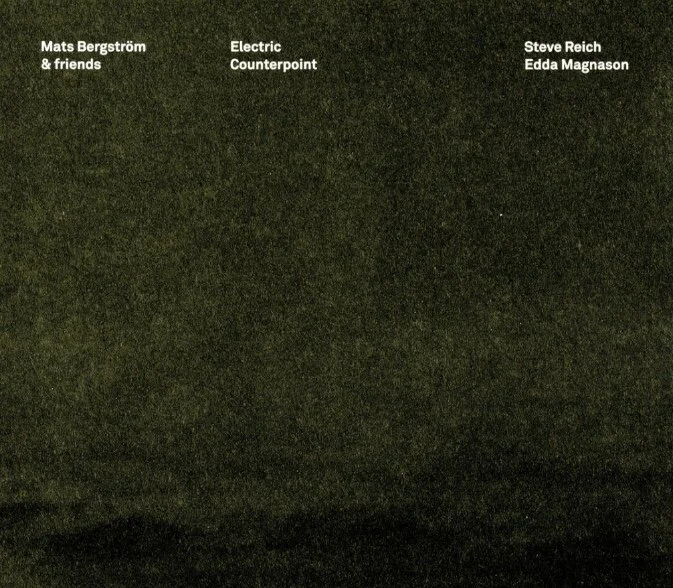Electric Counterpoint
Despite my first and strongest love for Baroque repertoire, I took in my college years a liking to minimalism from a academic perspective, the idea of a conserving musical ideas to the point of doing something more profound with those ideas than what they may actually seem capable of being on their own. I learned as a composition student that the development of musical ideas was a special skill.
The early pieces by Steve Reich I think fit into a very experimental kind of world. My first exposure to one of his pieces that made my ears perk up was his Electric Counterpoint for guitar and tape loop. I'd come to love the major release by Pat Metheny on Nonesuch.
This work has seemed to make an impact on others as well. I wanted to revisit two releases I recently discovered. The first is by Mats Bergström and the second is by Sean Shibe.
The Bergstrom album includes more Reich: an arrangement of his Nagoya Marimbas as Nagoya Guitars, a remix by the performer of that same piece, a piece for guitars and piano called 2x5, and finally, the artist records a tribute to Reich.
To me, the original Electric Counterpoint is about the clarity of the different voices. The distinct versions of Bergstrom are very clearly defined within a dry acoustic that I think suits the music well.
His remixes are more creative, for sure, and only make real sense in the context of the quotations from the originals. Under the Weather MIX is atmospheric by way of effects. The sonorities are most definitely born from guitar, but presented in some outlandish ways. While the piece isn't put together in the same way that Reich constructed his, the remixes are worthy of exploration as but another way to re-use the same source musical material.
The piece originally scored for marimbas is a shorter, single-movement work that develops over time in ways, to me, that are more interesting than in Reich's other Counterpoint pieces. It's my favorite piece by Reich, despite its short length. Bergstrom is able to comptetantly perform it. I can't blame someone not trying it on their own instrument and despite Bergstrom's development of color and intensity, I still prefer the piece on marimbas, especially those that are able to be separated well in the mix.
The Godspeed remix of the Nagoya piece is interesting in its start with a percussive element, what sounds like claps, which is a tongue-in-cheek reference to Reich's Clapping Music, I am sure. The vocal element adds something new and again, like the earlier remix, it's fun hearing the melodic riffs from the original within a contemporary shell.
While 2x5, I think, is interesting, as another fast-slow-fast piece, the more musically interesting piece, I think, is the artist's homage called So many layers of colour become a deep purple heart. While the sung lyrics aren't necessarily my cup of tea, hearing vocals with Reich is somewhat relevant, given the composer's own use of sung parts.
Sean Shibe's album is not a stricly Reich affair; the album is entitled Softloud: Music for Acoustic and Electric Guitars. The opening numbers are charming but not altogether profound pieces; the ones that end the album may take more care to warm up to, but seemingly in the center of Shibe's album is the Reich.
The sounds of his instruments are not as similar to the way Bergstrom seemed to imitate Metheny's. This isn't an altogether bad thing, it's different, and for me, difference is welcome.
Like the first album, Shibe's makes use of stereo separation to differentiate the tracks, and the effect here is even wider. I really like the mix of Shibe's instruments on the third track, Fast.
Both renditions work for me, although taking the albums wholesale, I'd put my money on Bergstrom's older release as the one to get because you get a more focused presentation of Reich and Reich-esque music.
To be sure, there are more recordings beyond these two. When I listen to, say, the one by Powerplant on synthesizers, I can't help but prefer those with the guitars. Benjamin Beirs is another worth exploring, who likes the sound of acoustic guitars in his recording, but the two highlighted here, I think, are among the best, to say nothing of the original by Pat Metheny.





